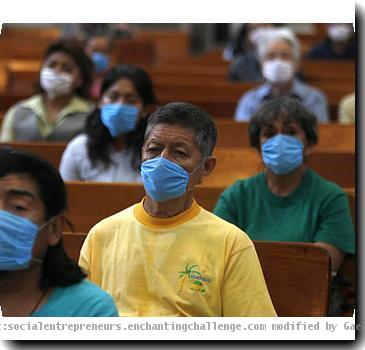WHO investigating swine flu mutations from Norway deaths, says significance still unclear
By APFriday, November 20, 2009
WHO investigating Norway swine flu mutations
GENEVA — The World Health Organization said Friday it is investigating samples of variant swine flu linked to two deaths and one severe case in Norway, but that so far the significance of the mutation is unclear.
Norway’s Institute of Public Health announced Friday that the mutation “could possibly…cause more severe disease” because it infects tissue deeper in the airway than usual.
The mutation was found in three of 70 analyzed swine flu cases, said Geir Stene-Larsen, the institute’s director.
Stene-Larsen said he does not believe the mutant virus is circulating in the general population in Norway, where about 680,000 people are estimated to have been infected with swine flu to date and 23 have died.
The same mutation has been found in both fatal and mild cases elsewhere, including in Brazil, China, Japan, Mexico, Ukraine, and the United States, said WHO.
In addition, “worldwide, viruses from numerous fatal cases have not shown the mutation,” the global body said. “The public health significance of this finding is thus unclear.”
“Just to say that the mutated virus infects deeper tissue doesn’t really tell us very much,” WHO spokesman Thomas Abraham told The Associated Press. “What we really need is more clinical and epidemiological data.”
WHO said the anti-viral drugs still appear to be effective against viruses with the mutation, and studies show that currently available pandemic vaccines confer protection against the variant strain.
Virus mutations occur spontaneously and many have no effect on the danger a virus poses to humans.
“Although further investigation is under way, no evidence currently suggests that these mutations are leading to an unusual increase in the number of H1N1 infections or a greater number of severe or fatal cases,” said WHO.
Meanwhile the Geneva-based agency updated its global tally of deaths caused by the virus to over 6,750.
It said transmissions appear to have peaked in some parts of the United States and Western Europe, but elsewhere the number of cases is still increasing, including in eastern Europe, and Central and Western Asia.

